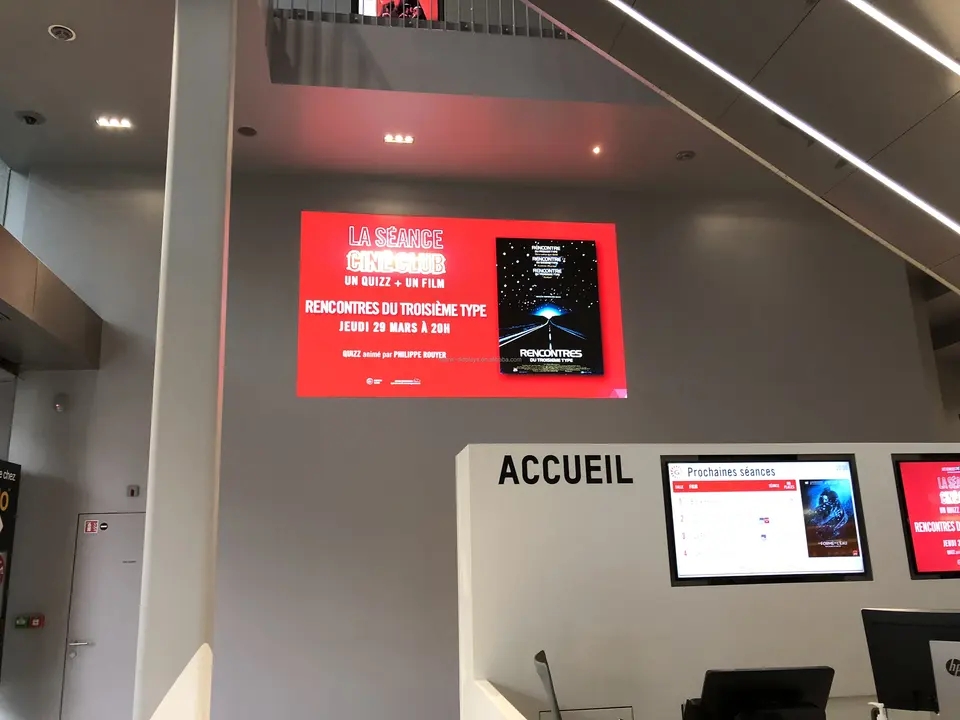LED screens are increasingly widely used in our daily lives, and I believe you are not unfamiliar with them. However, few people have a detailed understanding of LED screens. Let’s take a look at Lei Ling Display together.

(1) LED screen construction
1. Metal structure frame, which is used to form an inner frame and carry various circuit boards such as display unit boards or modules, as well as switching power supplies
2. Display unit: It is the main part of the LED screen, composed of LED lights and driving circuits. The indoor screen is a unit display board of various specifications, while the outdoor screen is a modular box.
3. Scanning control board: The function of this circuit board is to buffer data, generate various scanning signals and duty cycle grayscale control signals.
4. Switching power supply: Transforms 220V AC power into various DC power to supply various circuits.
5. Transmission cable: The display data and various control signals generated by the main controller are transmitted to the screen body through twisted pair cables.
6. Main controller: Buffers the input RGB digital video signal, transforms it into grayscale, reorganizes it, and generates various control signals.
7. Dedicated display card and multimedia card: In addition to having the basic functions of a computer display card, it also outputs digital RGB signals and signals such as line, field, and blanking to the main controller. In addition to the above functions, multimedia can also convert input analog Video signals into digital RGB signals (i.e. video capture).
8. Computers and their peripheral devices.
(2) Working principle of LED screen
Using a computer as the processing and control center, the LED screen corresponds to a certain area of the computer monitor (VGA) window point by point, and the display content is synchronized in real-time. The screen mapping position is adjustable, making it easy to choose the size of the display image at will.
The display dot matrix adopts ultra-high brightness LED light emitting tubes (red and green dual primary colors), with 256 grayscale levels and 65536 color change combinations, with rich and realistic colors, and supports VGA 24 bit true color display mode.
Equipped with graphic information and 3D animation playback software, it can play high-quality graphic information and 3D animation. There are more than ten ways for playing software to display information, including covering, folding, opening curtains, alternating colors, zooming in and out, and so on.
Using specialized program editing and playback software, information such as text, graphics, images, etc. can be edited, added, deleted, and modified using different input methods such as keyboard, mouse, and scanner.
The arrangement is stored on the control host or server hard drive, and the program playback sequence and time are integrated to achieve alternating playback and can be stacked with each other. It can receive video signals such as display recorders and DVD players.
LED screens are usually composed of a main controller, a scanning board, a display control unit, and an LED screen body. The main controller obtains the brightness data of each pixel on a screen from a computer display card, and then assigns it to several scanning boards. Each scanning board is responsible for controlling several rows (columns) on the LED screen, and the LED display signals on each row (column) are cascaded and transmitted through various display control units on the same line in a serial manner, Each display control unit is directly facing the LED screen.
The job of the main controller is to convert the signals displayed by the computer as cards into the data and control signal formats required for the LED screen.
The function of display control single operation is similar to that of image display screens, generally consisting of a shift register latch with grayscale control function. The scale of video LED screens is often larger, so larger integrated circuits should be used.
On the one hand, the scanning trigger receives video signals from the main controller, on the other hand, it transmits data belonging to its own level to its various display control units, and at the same time, it also transmits data not belonging to its own level to the next cascaded scanning trigger. The differences in space, time, sequence, and other aspects between video signals and LED display data require a scanning board to coordinate.
The above is a brief explanation of the structure and working principle of LED screens. If you want to learn more about LED screens, you can visit other related content on the Leiling official website.
